Horn of Africa Exercise Sharpens Command Skills
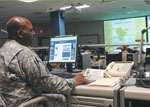 |
| The goal of the Joint Warfighting Center’s Mission Rehearsal Exercises (MRX) is to train the headquarters staff of joint task forces to operate effectively when they deploy. Lessons learned from previous deployments are applied to provide realistic training scenarios for the MRX. |
A simulation exercise is providing
The Horn of Africa is a strategically vital region bordering major shipping routes from the
The responsibility to train command staff before deployment resides with the
The MRX for the Combined Joint Task Force—Horn of Africa (CJTF-HOA) is the culmination of months of preparation and training, explains Col. Michael Rose,
The Horn of Africa MRX differs from the center’s other mission rehearsal exercises because it is an ad-hoc headquarters consisting of a core group of Navy personnel supported by individuals from the other services and civilian agencies such as the U.S. State Department. Col. Rose notes that the other MRX events usually are based on staff from an existing unit such as the 82nd Airborne Division who then are trained to operate as a joint task force. “That’s really our charter, as the
Although the exercise itself ran for a week in January, it was preceded by nearly six months of preparation. The MRX cycle began in June 2008 with a concept development conference conducted with U.S. Africa Command (AFRICOM) and the current staff personnel serving with CJTF-HOA. This initial meeting focused on the concept design for the training session, with real-world events from the previous year examined to provide material for the next iteration of the MRX.
After this initial meeting, the event’s design phase was launched with scenarios based on the June criteria, says Earl Eaddy, AFRICOM desk event planner for the Horn of Africa MRX. In October 2008, the Navy standing command element was formed with Rear Adm. Anthony M. Kurta, USN, designated as the incoming commander for the CJTF-HOA. The rest of the command staff then was brought in and assigned key roles for intelligence, logistics, strategic communications, planning and operations. “That’s the first time that they’ve come together as a command element,” Eaddy explains.
In the fall of 2008, the Navy staff and representatives from AFRICOM began planning the exercise in earnest. Goals and training events were examined as were all of the other various elements for replicating command and control in the region. These requirements were analyzed and combined to provide the new command element with the experience necessary to transfer authority.
During the same time period, Adm. Kurta and his staff underwent academic training to familiarize themselves with the theater, the command and control structure of CJTF-HOA and its interaction with the U.S. Embassy in
A second phase of academic training that occurred in December consisted of classes examining the details of operating a joint task force. Regional experts were brought in to educate the staff, and the standing commander of CJTF-HOA provided his assessment of the situation. Personnel from AFRICOM and all of the regional service components provided briefings about their operations in the theater. Eaddy notes that this second academic phase provides the staff with a “nuts and bolts” understanding of the region.
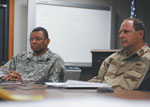 |
| CJTF-HOA Commander Rear Adm. Anthony M. Kurta (r), USN, participates in the training exercise with his staff prior to deploying to the region. |
Besides its ad-hoc staff structure, the CJTF-HOA is unique among the center’s task forces because it is not primarily combat-oriented. “They’re not there to fight. They’re there to prevent conflict,” Col. Rose maintains, noting the task force’s mission statement is to prevent conflict, promote regional cooperation, protect
Because of its primarily humanitarian mission goals, the MRX takes a “whole government” approach that includes experts from the State Department and the U.S. Agency for International Development (AID). The joint task force must work with a number of
A range of real-world events is used to provide story lines for the training. This may include floods in
Although the Defense Department has some responsibility for regional security, Eaddy notes that the lead organization for development is the AID. When the regional scenarios are established for the MRX, the day-to-day operational issues are examined. He explains that these scenarios all involve issues such as drilling wells, moving personnel and communicating with them across a region that can be very difficult to communicate and move across.
Two contingency events occurred during the 2009 MRX. The first involved a noncombatant refugee situation resulting from a conflict on the Ethiopian and Eritrean borders. This situation caused the State Department to request U.S. Defense Department assistance from CJTF-HOA. Eaddy explains that the staff had to work out how to move Americans and third-country nationals out of
The second event was a flood in
AFRICOM had a leading role in helping to design the MRX. Eaddy notes that the command provided input about the region and humanitarian scenarios. Members of AFRICOM’s staff also were embedded at the
The MRX is held in an office space that replicates the joint operations center in
International participation also is part of the training and preparation. During the simulated Eritrean military incursion into
Although the current MRX did not have the level of multinational involvement that the colonel would like, Eaddy explains that the goal is to increase the participation on the next event. He observes that such participation is difficult to schedule because foreign officers have important roles in the region. However, he notes that some previous MRX events have very good international representation.
An important feedback effort for the MRX is an annual staff assistance visit in May, where personnel from the
Web Resources
Combined Joint Task Force—Horn of

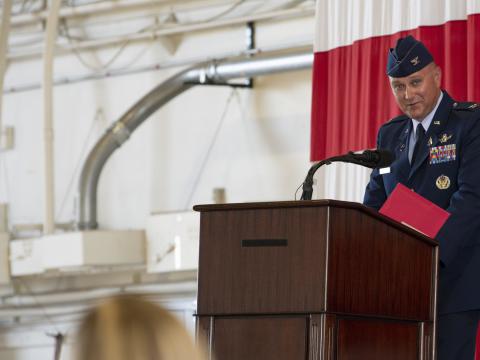

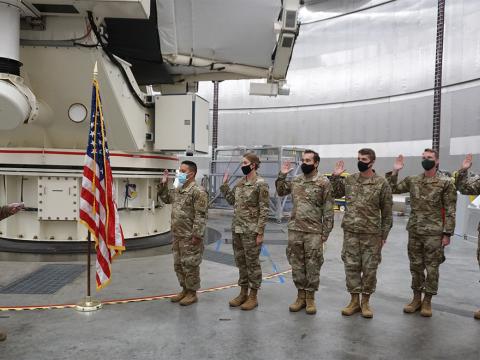
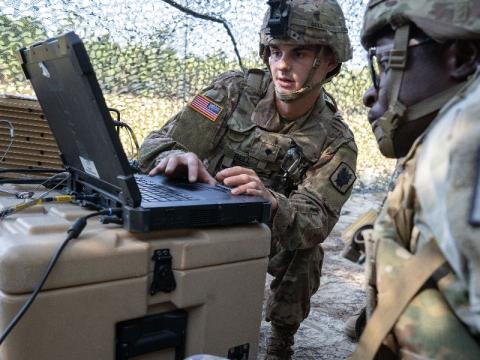
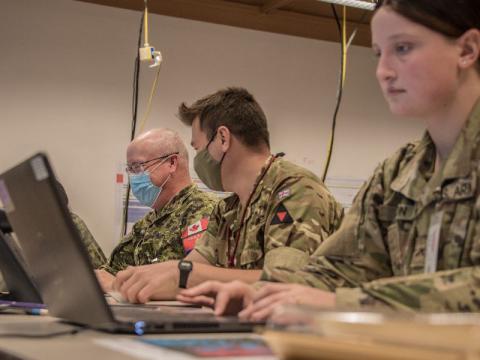
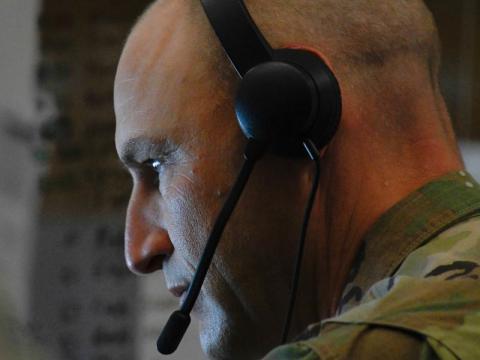
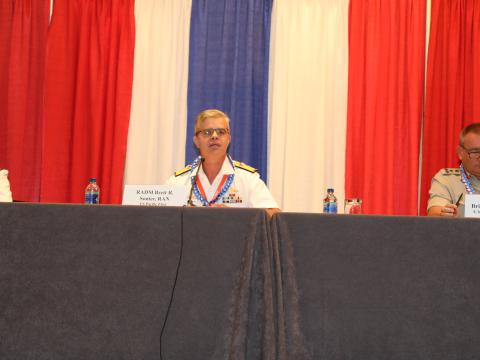

Comments